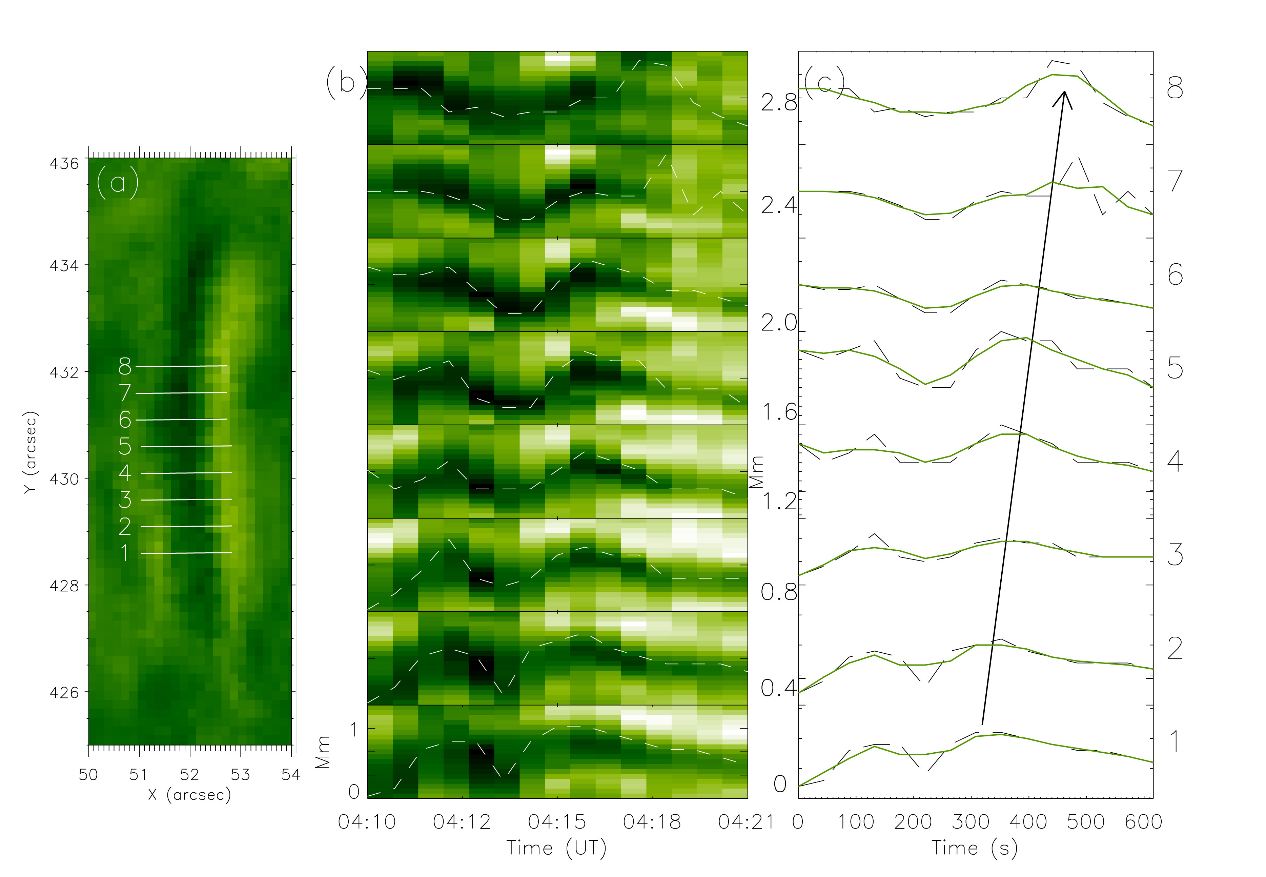
Using high-resolution data from the one-meter New Vacuum Solar Telescope (NVST), a research team led by Prof. YAN Xiaoli from the Yunnan Observatories of the Chinese Academy of Sciences (CAS) has conducted an in-depth study on the physical properties and oscillations of chromospheric fibrils surrounding a quiescent filament. The study was recently published in Monthly Notices of the Royal Astronomical Society.
Focusing on a quiescent filament observed by the NVST on November 1, 2023, the team analyzed 63 surrounding chromospheric fibrils. By combining high-resolution Hα data from the NVST with extreme ultraviolet (EUV) data and line-of-sight magnetograms from the Solar Dynamics Observatory, as well as full-disk images from the Chinese Hα Solar Explorer, the team discovered that while the orientations of the fibrils differed significantly on either side of the filament, their other physical properties were similar.
The analysis revealed that the fibrils exhibited a range of physical properties, including lifetimes of 150–650 seconds, widths of 0.32–0.85 megameters (Mm), maximum lengths of 3–8.5 Mm, projection velocities of 7–29 km·s-1, and decelerations of 45–474 m·s-2.
To investigate the oscillatory properties of the fibrils, the team enhanced faint signals using a motion magnification algorithm. This technique identified transverse oscillations in some fibrils, with periods of 269–289 seconds and phase speeds of 13.7–25.8 km·s-1, characteristics consistent with magnetohydrodynamic kink waves.
Power spectrum analysis showed that the dominant oscillation periods were concentrated in the range of 4.8–6.6 minutes (288–396 seconds), corresponding to a frequency range of 2.5–3.5 mHz. Furthermore, the oscillation power was significantly higher in fibril regions than in surrounding areas, peaking at the fibril roots.
Energy estimates indicate that the energy flux carried by these waves ranges from 0.4 to 6.5 W·m-2, which is insufficient to solely sustain chromospheric radiative loss.
The study supports the theory that fibrils are driven by magnetoacoustic shocks, providing new insights into energy transport in the solar chromosphere. It also highlights the capability of the NVST's high spatiotemporal resolution for observing fine chromospheric structures.
This work was supported by the Strategic Priority Research Program of CAS, the National Science Fund for Distinguished Young Scholars, and other funding sources.

Panel (a): Motion-magnified view of the fibril. The white lines indicate the positions for analyzing transverse oscillations. Panel (b): The space-time plots corresponding to positions 1-8 in panel (a). Panel (c): The lines represent the fitted minimum intensity values for each column. (Image by Prof. YAN Xiaoli)

86-10-68597521 (day)
86-10-68597289 (night)

52 Sanlihe Rd., Xicheng District,
Beijing, China (100864)

